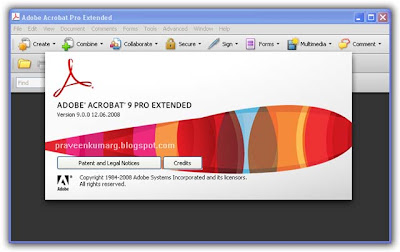
- #ADOBE LIVECYCLE DESIGNER REPLACEMENT HOW TO#
- #ADOBE LIVECYCLE DESIGNER REPLACEMENT PDF#
- #ADOBE LIVECYCLE DESIGNER REPLACEMENT PORTABLE#
- #ADOBE LIVECYCLE DESIGNER REPLACEMENT CODE#
- #ADOBE LIVECYCLE DESIGNER REPLACEMENT PROFESSIONAL#
However, dynamic XFA PDFs do offer the following advantages:
#ADOBE LIVECYCLE DESIGNER REPLACEMENT PDF#
#ADOBE LIVECYCLE DESIGNER REPLACEMENT HOW TO#
You’ll learn how to do this in an upcoming exercise. Please note that if you’re using the free Adobe Reader program, you won’t yet be able to use the commenting tools because this file has not been Reader extended.
#ADOBE LIVECYCLE DESIGNER REPLACEMENT PROFESSIONAL#
The step-by-step instructions in this chapter were created with Acrobat Professional 11 for Windows. You can create both static and dynamic XFA forms in Designer. As you learned in Part 1, “The Designer Tool,” all the objects and events in these XFA PDFs are scriptable at runtime, so this PDF type offers you a great deal of flexibility and power. You can see the complete XML structure of your forms in Designer by selecting the XML Source tab of the Layout Editor. This well-structured and flexible format enables a LiveCycle Server to transform your Designer files into many different formats, including traditional PDF and HTML.
#ADOBE LIVECYCLE DESIGNER REPLACEMENT CODE#
For instance, the following code shows you what a simple text object looks like in an XFA PDF file: Īs you can see, XFA forms are XML based. In many ways, the XFA PDF file format is closer to an HTML file than it is to a traditional PDF file. The forms and files you create with Designer are based on Adobe’s XML Forms Architecture (XFA). It’s important to note that there’s another type of PDF form, called an Acroform, that’s different from the PDF forms you create in Designer.


XFA PDF (PDF Form)Īdobe uses the term PDF form to refer to the interactive and dynamic forms you create with Designer.

Many of these formats and specifications are International Organization for Standardization (ISO) standards, and some are specific intellectual property owned by Adobe. The term PDF refers to a family of file formats and an evolving set of technical specifications. If you’re deploying PDFs to a heterogeneous user base, you need to know how your PDFs will perform in these third-party tools. And it works on virtually every computer system and renders PDF files faithfully and efficiently regardless of the system’s fonts and software.Īlthough Acrobat is the ideal tool, there are also many non-Adobe PDF viewers on the market. It can also handle the requirements of different types of users working with different types of PDFs. Acrobat has the agility to run as a standalone application or as a plug-in to your web browser, and it gracefully balances these two modes.

It’s important to understand the features of the various Acrobat programs because their features affect how your PDF forms function. Like PDF, Adobe Acrobat is a family with many members. All these types work best in the premier client tool for viewing and working with PDFs-Adobe Acrobat. You’ll learn how to create these various types of PDFs and understand how and why to use each one.
#ADOBE LIVECYCLE DESIGNER REPLACEMENT PORTABLE#
Portable Document Format (PDF) is actually a family of file formats, and this chapter focuses on the ones that are relevant to LiveCycle Designer.


 0 kommentar(er)
0 kommentar(er)
